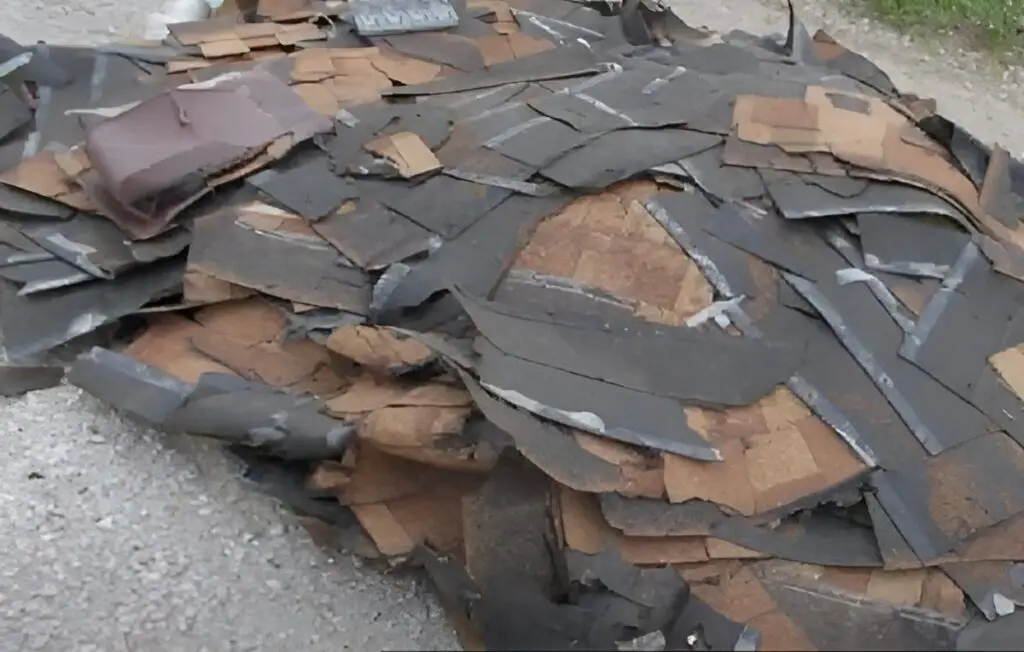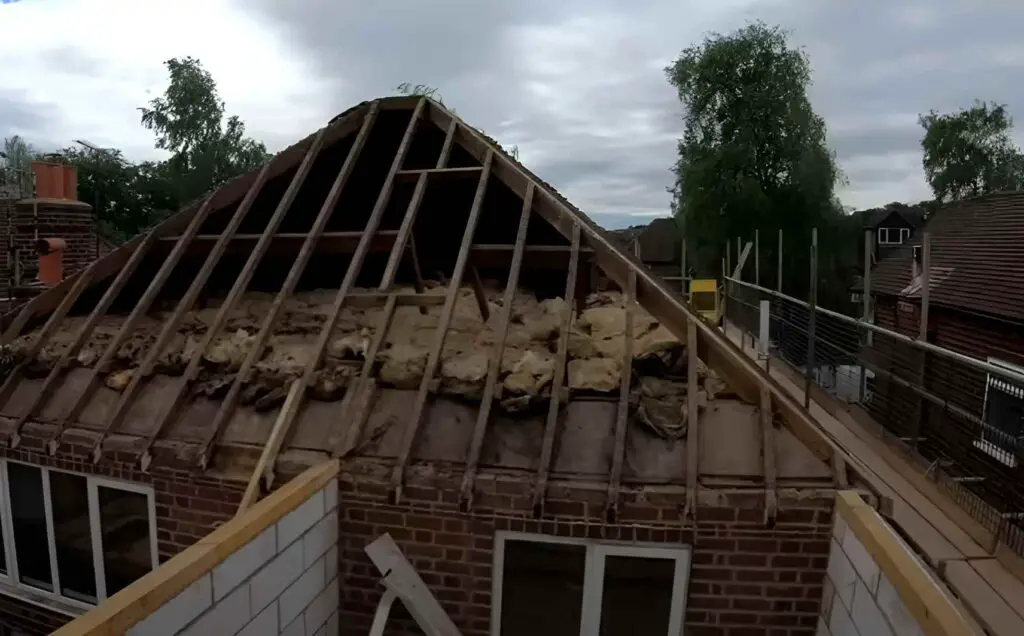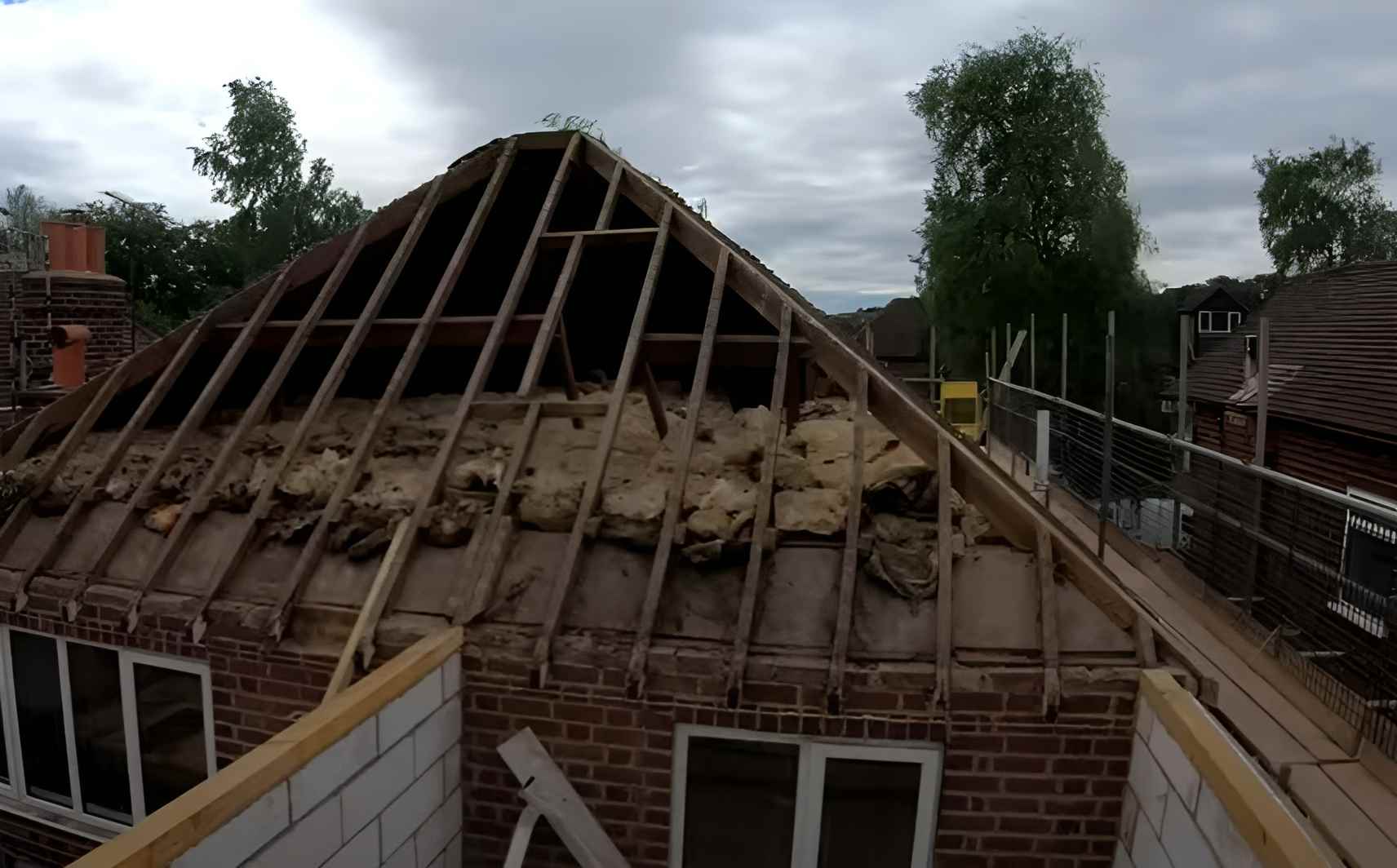Last Updated on: 23rd July 2023, 09:44 am
Welcome everyone and let me tell you a story. One young man (just slightly over 50), let’s call him John, decided to replace his old, leaky roof. He bought a ton of rooifng materials, thinking it’s better to have more than less. Well, he resulted with a mountain of leftover shingles, nails, underlayment and stuff. Now, he’s stuck with all this excess material, which he’s trying to sell on the second-hand market. But, dears, it’s not as easy as he thought.
This is a common scenario when homeowners don’t calculate roof waste factor accurately. It’s not just about the money wasted on unnecessary materials. It’s also about hassle of storing or disposing of leftovers. And also let’s not forget the environmental impact. Well, if you’re planning rofoing project, it’s crucial to understand how to calculate the roof waste factor.
Roof Waste Factor
So, what is this roof waste factor we’ re talking about? Simply put, it’s percentage of roofing materails that will end up as waste during roofing project. This includes cut-offs, damaged materials, plus extras for complex areas of roof. It’s an essential part of any roofing estimate, as its affects both material cost and the labor costs.
Why does its matter, you ask? Well an accurate waste factor can save you money, time, and headaches. It helps you buy just right amount of materials, avoiding unnecessary expenses and waste. Plus, it gives you a more accurate estimate of the total project cost. So it’s not something you want to overlook or underestimate.
The Role of Roofing Materials in Waste Calculation
Now let’s talk about roofing materials. Different materials have different waste factors. For instance, apshalt shingles, the most common roofing material, have waste factor of about 10%. But if you’re using something like wood shakes or metal roofing, the waste factor can be significantly lower or higher.
Why is that? It’s all about size, shape. And installation method of materials. Some materials, like asphalt shingles, are easy to cut and fit, leading to less waste. Others, like ceramic tile roofs, can break easily, increasing waste. Well when claculating roof waste factor, you need to consider the type of material you’re using.
Waste Factor for Different Roof Types: Gable, Hip, and More
Roof shapes also play big role in waste calculation. Gable roof is pretty straightforward with just two slopes meeting at ridge, making it low-waste contender. The waste factor for gable roof typically is around 10%. This means that for every 100 square feet of roof area, you’ll need to account for an additional 10 square feet of roofing materials to cover waste.
And let’s consider the hip roof. Unlike the gable roof, a hip roof has four sloping sides. This design increases complexity of roof and, consequently, the waste factor. For hip roof, you can expect a waste factor of around 10 to 15%. This means that for every 100 square feet of roof area, you’ll need to account for an additional 10 – 15 square feet of rooifng materials.
Waste Factor for Gambrel and Dutch Roofs
Moving on to gambrel roofs, these beauties have two various slopes on each side. This makes them more complex and increases the waste factor. For a gamrbel roof, the waste factor can go up to 20%.
And what about Dutch roofs? These roofs have an additional gable at the top, which adds to cmoplexity and the waste factor. For a Dutch roof, the waste factor can be as high as 20% to 25%. And that is an additional 20 to 25 square feet of roofing materials for every 100 square feet of roof.
So, when you’re measuring your dear roof and calculating waste factor, don’t forget to take into account shape of your roof. It can make enormosu difference in your calculations and your final cost.
How to Calculate 10% Waste (a typical gable roof waste)
Calculating 10% waste might sound complicated. But it’s actually quite easy. Let’s say you’ve measured your precious roof and found out that it’s 20 squaers (a square is 100 square feet of roof area). To calculate 10% waste, you just need to add 10% to the total roof area. So, in this case, you would need materials for 22 squares.
But remember, this is just a rough estimate. The actual waste factor can be higher or lower, depending on the type of materiasl and the complexity of the roof. Well, always double-check your again calculations and consult with professional if you’re unsure.
Measuring a Roof for Roofing
Measuring a roof for roofing is a paramount step in any roofing project. It helps you determine the amount of matreials you need and calculate the waste factor. But how do you do it? Well, it’s not as hard as it might seem.
First, you need to measure the length and width of each roof plane. Then, multiply these numbres to get area of each plane. Add up the areas of all planes to get total roof area. Don’t forget to add extra for overhangs and complex areas.
Remember, accurate measurements are key to a successful roofing project. So, take your time and double-check your numbers. Also, if you’re not comfortable doing it yourself, don’t hesitate to hire a expert.
The Consequences of Excessive Roofing Waste
Excessive roofing waste is not just financial issue. It’s also an environmental problem. Every year, millions of tons of roofing materials result in landfills, contributing to pollution and waste. And let’s not forget about the energy and resources used to produec these materials in first place.
But the consequences of excessive roofing waste go beyond the environment. It can also lead to higher labor costs, as workers need to handle and dispose of waste. And also it can cause prolbems with building codes and regulations, as some areas have strict rules about construction waste.
So, it’ s in everyone’s best interest to minimize roofing waste. It’s great for your wallet, good for environment, plus great for the community.
Best Practices for Reducing Roofing Waste

Reducing roofing waste is not just about accurate calculations. It’s also about smart planning and efficeint work practices. Here are some tips to help you reduce waste in your precious roofing project:
- Choose durable, long-lasting materials. They might cost more upfront, but they can save you money in the long run.
- Plan your cuts carefully to minimize waste. Use software or apps to aid you with this.
- Recycle or reuse leftover materials. Many roofing materials, like metal and asphalt shingles, can be recycled.
- Hire a professional roofing contractor. They have the skills and experience to do job efficiently and miinmize waste.
Remember, every bit of waste reduction helps. Well, do your part and make your roofign project as green and efficient as possible.
FAQs
What is the waste factor of metal roof?
Metal roofs are known for their durability and longevity. But when its comes to waste factor, it can vary. The waste factor for a metal roof can be as low as 2% or as high as 15%, depending on complexity of the roof and the type of metal roofing material used. For instance, metal shignles or tiles may have a higher waste factor due to need for more cutting and fitting.
On other hand, standing seam metal roofs. This come in long, broad panels, usually have a lower waste factor. This is because these panels can be cut to the exact length of the roof, reducing amount of off-cuts. However, it’s always best to cnosult with a expert roofer or metal roofing supplier to get more accurate estimate for your dear project.
What is the waste factor for wood shake roof?
Wood shake roofs, with their natural and rustic look, are trendy choice for many homeowners. However, they do have higher waste factor compared to other roofing materials. The waste factor for wood shake roof can range from 10% to 20%, depending on the complexity of roof and size and qualtiy of shakes.
The reason for this high waste factor is that wood shakes are not uniform in size and shape, and teyh can split or crack during installation, leading to more waste. Also, extra shakes are often needed for valleys, ridges. And hips on the roof. So, if you’re considering wood shake roof, assure to factor in the higher waste factor in your bleoved budget.
What is the waste factor for a gable roof?
A gable roof, with its simple two-sided design, typically has a lower waste factor copmared to more complex roof designs. The waste factor for a gable roof is usually around 10%, but it can be lower or higher depending on the size of the roof and the type of roofing material used.
For example, if you’re using asphalt shingles, which are easy to cut and fit, the waste factor might be closer to lower end of the range. But if you’re using a material that’s more difficult to work with, like wood shakes or tiles, the waste factor might be higher. Always consult with a rofoing professional to get the most accurate estimate for your specific project.

Conclusion
Dears, calculating roof waste factor is both an art and a science. It requires accurate measurements, a good understanding of roofing maetrials and roof shapes, and a bit of math. But it’s an crucial part of any roofing project, helping you save money, reduce waste, plus plan your beloved project more efficiently.
So, whether you’re homeowner planning DIY roofing project or a expert roofer looking to improve your own estimates, I hope this guide has been helpful. Remember, every roofing projetc is unique, so always take time to do your calculations and double-check your numbers. Also, if you’re ever in doubt, don’t hesitate to consult with a professional. After all, as the oldie saying goes, “Measure twice, cut once.”
